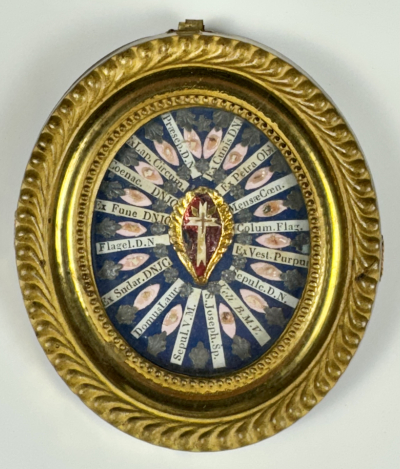The True Cross is the name for physical remnants which, by the Church tradition, are believed to be from the cross upon which Jesus was crucified. Empress Helena, the mother of Constantine, the first Christian Emperor of Rome, traveled to the Holy Land in 326–28, where she discovered the hiding place of three crosses that were believed to be used at the crucifixion of Jesus and of two thieves, St. Dismas and Gestas, executed with him, and a miracle revealed which of the three was the True Cross. Fragments of the Cross were broken up, and the pieces were widely distributed; in 348, in one of his Catecheses, Cyril of Jerusalem remarked that the "whole earth is full of the relics of the Cross of Christ." Most of the very small relics of the True Cross in Europe came from Constantinople after the city was captured and sacked in 1204 during the Fourth Crusade. They were carved up by the present bishops and divided with other very precious relics among the knights; who, after their return to the homeland, donated them to churches and monasteries.
Arma Christi ("weapons of Christ"), or the Instruments of the Passion, are the objects associated with the Passion of Jesus Christ, seen as the weapons Christ used to conquer Satan. Relics of the most important items had a long history, dating back to Empress Helena's discovery of the True Cross in the early 4th century. Relics of the Holy Lance, Holy Sponge, Holy Chalice, and nails from the cross were all venerated well before 1000 and were to proliferate in later centuries. There was a wave of newly acquired relics in the West during the Crusades and a further wave as the Instruments became featured more prominently in devotional literature and practices in the 14th century. Relics of the Passion were preserved by the Catholic Church and venerated by Christians of all denominations.









 Поменять язык на русский
Поменять язык на русский 